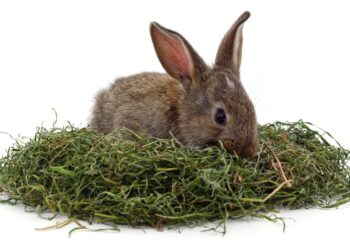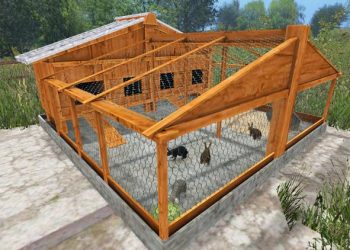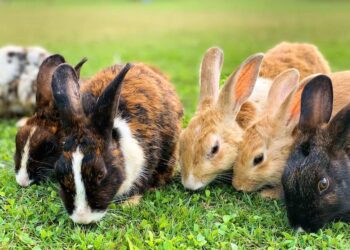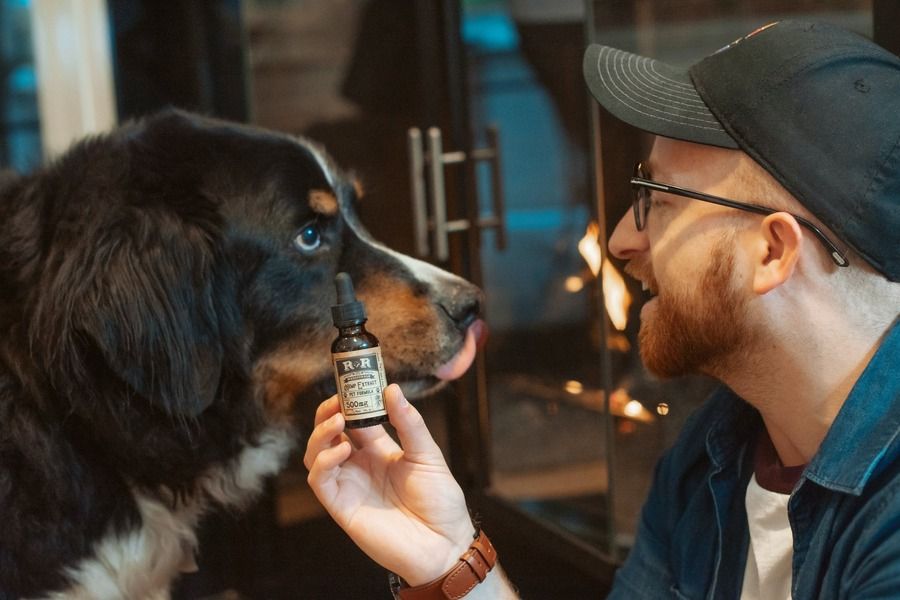The Angora rabbit is one of the most curious breeds. The origin and origin of the animal alone are mysterious. You can immediately recognize the breed by its extremely thick coat. As a result, the rabbit resembles a ball of wool. Within the breed, one can also distinguish different types. The long hair deters many rabbit owners.
That’s a shame because Angora rabbits are gentle and friendly animals. With some extra care, they are fine to keep as pets. You should brush angora daily. In addition, regular cutting is also necessary. So think carefully before you bring this rabbit into your home. How do you take care of an angora and what is involved?
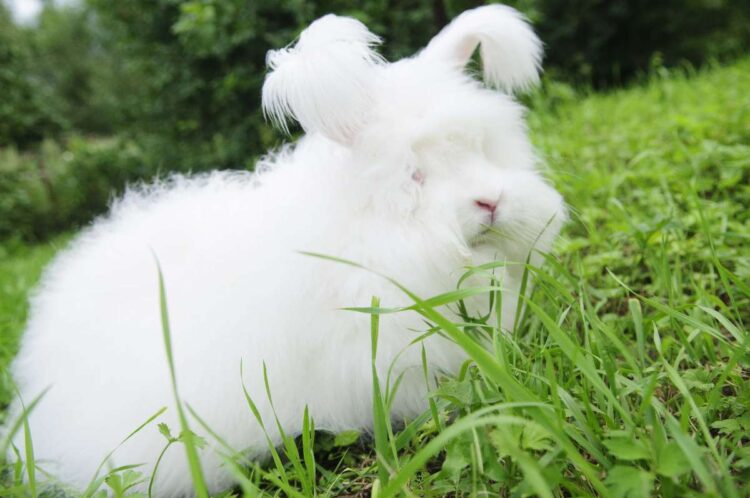
The Origin of the Angora Rabbit
The Angora rabbit is one of the oldest rabbit breeds in the world. Little is known about the origin of the breed. So there are a lot of misunderstandings going around.
Breed Name
There is no consensus on the origin of the name. Perhaps the breed owes its name to Angora in Turkey. Other long-haired animal species were also found in this province, such as the angora cat and the angora goat. According to other sources, ‘angora’ is a corruption of the name of the Turkish capital Ankara.
Origin of the Angora Rabbit Fur
The breed and its typical coat are said to have been created by genetic coincidence. This too is far from certain. In the past, there has been crossbreeding between Angora rabbits and other breeds. For example, all angoras were initially wild-colored and the well-known white color was created by deliberate crossings with albino rabbits. White wool was simply easier to process and dye than colored wool.
Introduction To Angora Rabbit in Europe
According to some sources, the breed existed in England as early as the 15th century, but that is unlikely and unproven. The first angoras probably arrived in England in the eighteenth century thanks to seafarers. They took the animals with them from their travels to the east.
The animal was given the name ‘white Turkish rabbit’ or also ‘English Silk Rabbit’. It was only later that the breed was renamed ‘angora’. From England, this breed also called the English Angora rabbit, later spread all over Europe. Wool from angoras was a precious commodity. Breeding was therefore handled with care.
As early as 1723, English sailors sold angora rabbits in French ports and they become French angora rabbits, and in 1777 the export of angora rabbit cargoes to Germany was registered.
The angora rabbits back then did not resemble the present. The fur was much shorter and the ears were also a lot shorter.
Angora Rabbit Appearance
Angora Rabbit Colors
Most angoras are white with red eyes, but they also come in other colors regularly. This is because the animals are now also kept as pets and they are not always interested in selling the wool. Some Angoras are now also white with blue eyes or have brown, black, blue, or even yellow fur.
Sable-colored angoras are also occasionally found, but these are extremely rare and not officially recognized in all countries.
Angora Rabbit Weight
Angora rabbits weigh on average three to four kilos.
Ear length
The ears are erect and strong and thick. Their length averages twelve centimeters.
Different Types Of Angora Rabbit
There is no such thing as the angora rabbit. After all, there are still many variants within the breed. Angoras bred in France have a harder and less woolly hair feel than English Angoras. This has the advantage that the coat does not, or hardly ever, felt.
They also give more wool (500 to 1000 grams per year) than the English Angoras: they give an average of only 300 grams of wool per year.
There are also angora dwarf rabbits. These pocket-sized angoras originally arose from crosses with the pole breed. This smaller breed otherwise requires the same grooming as a regular Angora.
Lionhead Angora Rabbit
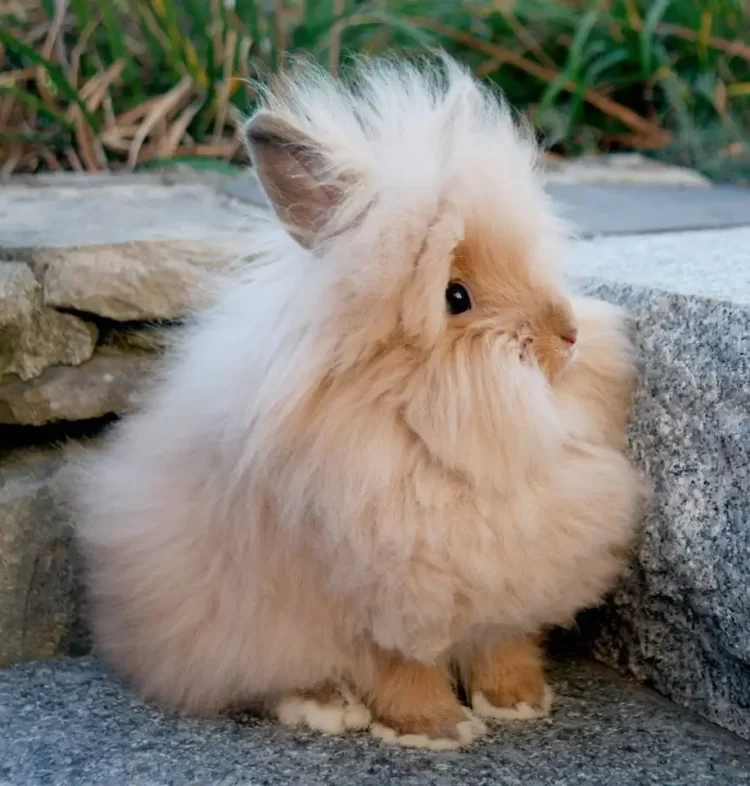
They are also relatively easy to care for and can live up to 10 years with proper care.
They are also relatively quiet, so they won’t disturb the neighbors. The Lionhead Angora Rabbit is a great choice for experienced rabbit owners or families who want a pet that is both cute and easy to care for.
Satin Angora Rabbit
The Satin Angora rabbit is a breed of rabbit characterized by its long, silky fur, which is the result of a genetic mutation. It has a medium-sized body, with ears that are erect and slightly curved. The Satin Angora rabbit is a very docile and affectionate animal and makes a great pet.
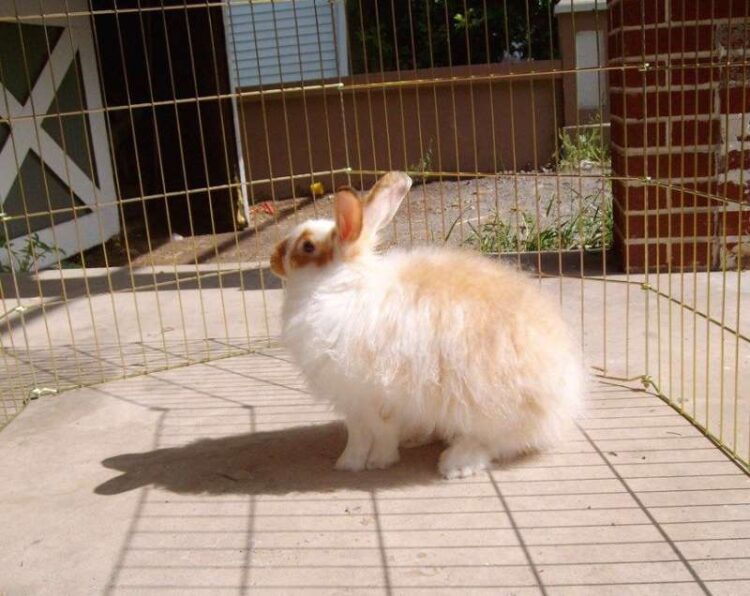
How to care for and cut the coat?
The coat care of an Angora rabbit is very intensive. So think carefully before you bring this breed into your home. Not taking care of the fur can even be fatal for the rabbit. If you do not cut the fur in time, the animal will eventually eat less, lose weight and even die.
This is because the thick fur warms up their body temperature too much. Angora is also very bad at rain. An outdoor rabbit therefore always needs sufficient shelter.
Cutting the coat may take half an hour for someone with experience, but often much longer for beginners. So allow enough time. It is best to have this done by someone with experience.
How To Shave An Angora Rabbit?
At the age of eight weeks, you can cut an Angora for the first time. The rabbit has to get used to clipping at a young age. In this way, the animal allows this more easily for the rest of its life.
How to cut?
You need sharp, professional hairdressing scissors to cut an Angora rabbit. On the internet, you will find several sites where you can order professional scissors.
The biggest problem is the hard-to-reach places such as the hind legs and tail. For example, you can only cut the hair on the underside of the Angora rabbit when the rabbit is lying on its back. Since this is not a natural attitude, many rabbits resist this at first. There are tricks where you put the rabbit on your lap.
The head of the animal lies on the knees and the ears are clamped between the knees. Angoras are friendly and calm rabbits but they have to get used to this attitude from an early age. You can leave the hair on the ears. The rabbit is not bothered by this. Some owners also find this more beautiful.
How fast does the fur grow?
This varies a bit per rabbit, but on average you should count on about eight centimeters every three months. You should therefore trim the angora rabbit every three months.
Oddly enough, an Angora rabbit’s hair usually grows faster in the winter. People say that hair grows faster in the summer thanks to the extra sunlight, but the opposite is true for angoras.
How to cut short?
In the summer months, you can safely trim an Angora rabbit to the skin. In the winter months, you should leave about one to two inches of hair to protect the rabbit from the cold.
Angora Rabbit Brush
In addition to clipping the coat every three months, daily brushing is also essential. Brushing out the coat is important to prevent the hair from tangling.
Which brush?
A synthetic brush is not recommended. After all, this can give statistics. A hog bristle brush is better.
How to Brush an Angora Rabbit Fur?
Work very carefully. Brush gently and not too hard, otherwise, this can lead to loss of undercoat. Brushing should be done layer by layer. You should not overlook any tangles. You should not only brush the places that you can reach well, but also more difficult places such as the chin, tail, armpits, legs, and chest. Spot tangles by hand. If it really doesn’t work, you can carefully cut the tangles away if necessary.
Other Angora Rabbit Care
In addition to a quarterly coat and daily brushing, there are other things to consider when keeping an Angora rabbit.
The substrate of the rabbit enclosure
A substrate of sawdust, hay, or straw is not recommended. This material gets into the fur too easily, gets stuck there and it’s hard to get it off again. So choose a different material.
Breeders
Angora rabbit breeders have additional concerns. If a ram’s coat is too thick, this can cause problems when he has to cover the female. Even nurses must be freed of their thick fur beforehand. If not, they often have problems whelping and nursing a litter of bunnies. Angora rabbits usually give birth to between six to eight young.
Think before you start angoras
You might know Wally, the most famous angora rabbit in the world and a real star on Instagram. It is understandable that you also want such a cute rabbit, but don’t take it overnight. An angora rabbit is beautiful, but there is a lot of extra care involved. So consider carefully whether you want to spend that time taking care of a pet.
If necessary, you can also choose to have this done by a professional groomer in a dog and cat salon, but then you must of course be prepared to spend money on it every three months.
Angora Rabbit for Sale
Looking forward to buy a giant rabbit also called angora rabbit? There are many breeders and there are many classified websites offering angora rabbit for sale.
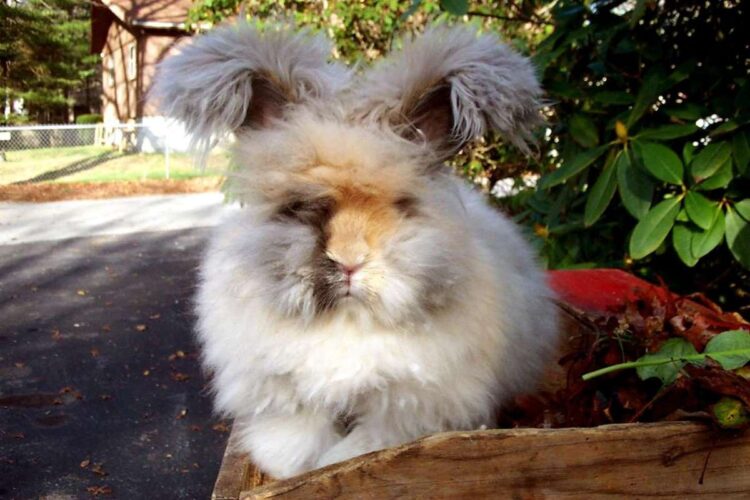
Some of angora rabbit sellers are
Note: We have no association with the aforementioned vendors.
English Angora Rabbit For Sale
If you’re looking for an English Angora rabbit for sale, there are a few places to look. You can search online for breeders, search local classifieds, or visit pet stores.
Many breeders will offer rabbits of varying ages, so you’ll likely be able to find a rabbit that is perfect for your family. Additionally, you can contact your local humane society, as they sometimes have English Angoras available for adoption.
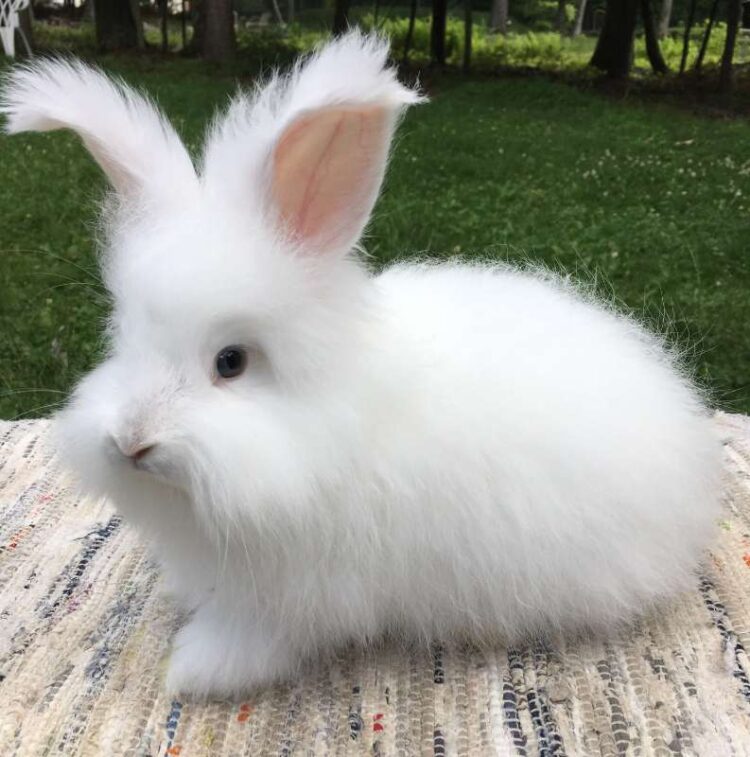
How Much Does An Angora Rabbit Cost?
The cost of an Angora rabbit can vary depending on the breed and where you purchase it from. Prices can range from $50 to $500 or more.?




